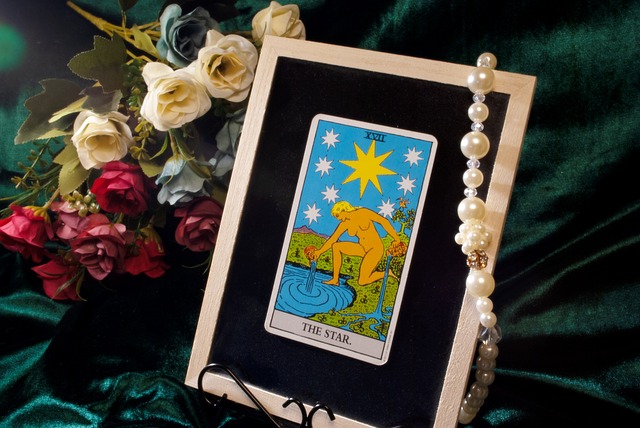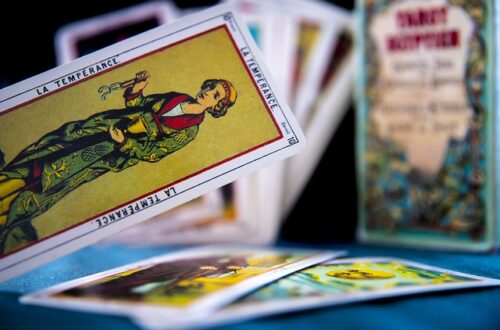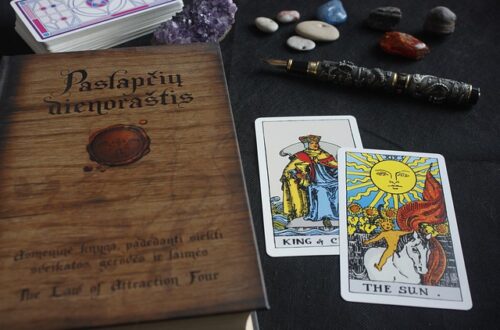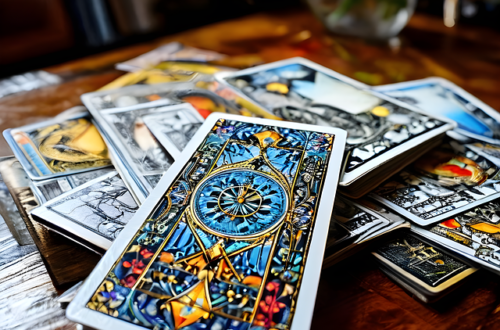
The meaning of each suit in the Minor Arcana
Table of Contents
The Meaning of Each Suit in the Minor Arcana
The Minor Arcana, part of the tarot deck, consists of four suits: Cups, Pentacles, Swords, and Wands. Each suit carries unique symbolism, connecting to various aspects of life. Understanding these suits enhances our ability to interpret tarot readings, providing deeper insights into the querent’s situation. This article explores the meaning of each suit in detail, examining their symbols, themes, and implications for readers.
Overview of the Minor Arcana
The Minor Arcana comprises 56 cards, divided into four suits. Each suit contains 14 cards, including ten numbered cards and four court cards. The suits reflect everyday experiences, emotions, and challenges. They stand in contrast to the 22 cards of the Major Arcana, which focus on significant life events and spiritual lessons. Each suit represents a different element, guiding us through the multifaceted nature of existence.
The Suit of Cups
Symbolism and Element
The Suit of Cups is associated with the element of Water. This suit represents emotions, relationships, and connections. The symbols of the cups reflect feelings and the inner world. Cups are often depicted as chalices or vessels, symbolizing the capacity to hold and express emotions. The flowing nature of water emphasizes adaptability and the necessity of emotional balance.
Key Themes
In readings, the Suit of Cups often addresses matters of the heart. Love, joy, and compassion frequently appear, highlighting the importance of emotional fulfillment. Additionally, this suit explores intuition and creativity. The Cups encourage individuals to embrace their feelings and trust their instincts. When interpreting these cards, consider both positive and negative aspects of emotional experiences.
Positive Interpretations
When Cups appear positively in a reading, they signal harmony in relationships. This suit often indicates love, friendship, and emotional growth. For instance, the Two of Cups represents partnership and mutual respect, suggesting a strong connection between individuals. The Ace of Cups symbolizes new beginnings in love and creativity, inviting emotional exploration and joy.
Negative Interpretations
Conversely, negative interpretations of Cups may indicate emotional turmoil or unresolved issues. The Five of Cups often reflects loss and disappointment, urging the querent to focus on what remains rather than what has been lost. Similarly, the Seven of Cups warns against illusions and indecision, encouraging clarity in emotional matters. Recognizing these potential challenges is crucial for a comprehensive understanding of the suit.
The Suit of Pentacles
Symbolism and Element
The Suit of Pentacles is linked to the element of Earth. This suit embodies material aspects of life, including finances, work, and physical well-being. The symbols of pentacles—often depicted as coins or discs—represent the tangible elements of existence. This suit encourages grounding and practicality, emphasizing the importance of building a solid foundation.
Key Themes
In tarot readings, the Suit of Pentacles often addresses issues related to work, money, and material possessions. It highlights the value of hard work, perseverance, and security. The Pentacles encourage individuals to assess their resources and make informed decisions about their financial and physical well-being. Moreover, this suit reflects the connection between the material and the spiritual.
Positive Interpretations
Positive interpretations of Pentacles signify abundance and success. The Ten of Pentacles, for example, represents wealth and stability, often indicating a prosperous family legacy. The Eight of Pentacles emphasizes diligence and mastery, suggesting the importance of skill development and dedication. These cards encourage individuals to embrace their achievements and appreciate their material comforts.
Negative Interpretations
Negative aspects of the Suit of Pentacles may highlight financial struggles or materialism. The Five of Pentacles often represents hardship and poverty, urging individuals to seek support during difficult times. Additionally, the Seven of Pentacles may indicate frustration with slow progress, prompting reflection on long-term goals. Awareness of these challenges can lead to growth and resilience.
The Suit of Swords
Symbolism and Element
The Suit of Swords is associated with the element of Air. This suit represents intellect, communication, and conflict. Swords symbolize thoughts, ideas, and the power of the mind. They often depict challenges and the need for mental clarity. This suit emphasizes the duality of thought—how it can create and destroy.
Key Themes
In tarot readings, the Suit of Swords often addresses issues related to conflict, decisions, and challenges. It encourages individuals to confront difficulties head-on, using their intellect and reasoning. Swords highlight the importance of communication, urging honesty and clarity in discussions. This suit reminds us that while thoughts can be powerful, they must be balanced with emotional awareness.
Positive Interpretations
When Swords appear positively, they signify clarity and resolution. The Ace of Swords represents new ideas and breakthroughs, encouraging individuals to embrace their insights. The Six of Swords often symbolizes transition and movement towards calmer waters, suggesting that challenges are being overcome. These cards inspire confidence in one’s mental abilities and decision-making skills.
Negative Interpretations
Conversely, negative interpretations of Swords may indicate conflict and anxiety. The Three of Swords often represents heartbreak and sorrow, emphasizing the need for healing. The Nine of Swords signals worry and fear, urging individuals to confront their anxieties. Recognizing these aspects can provide clarity and encourage personal growth through adversity.
The Suit of Wands
Symbolism and Element
The Suit of Wands is linked to the element of Fire. This suit embodies action, creativity, and inspiration. Wands symbolize energy, passion, and the drive to achieve. They often depict growth and movement, reflecting the dynamic nature of life. This suit encourages individuals to harness their creativity and pursue their ambitions with enthusiasm.
Key Themes
In tarot readings, the Suit of Wands often addresses issues related to creativity, ambition, and personal growth. It emphasizes the importance of pursuing one’s passions and taking risks. Wands encourage individuals to step outside their comfort zones and embrace opportunities for expansion. This suit reflects the vitality of life and the power of inspiration.
Positive Interpretations
Positive interpretations of Wands signify energy and enthusiasm. The Ace of Wands represents new beginnings and creative inspiration, urging individuals to act on their ideas. The Three of Wands often indicates expansion and exploration, suggesting that opportunities are on the horizon. These cards inspire confidence in one’s ability to manifest dreams and pursue goals.
Negative Interpretations
Negative aspects of the Suit of Wands may highlight burnout or impulsiveness. The Five of Wands often represents conflict and competition, urging individuals to navigate challenges with diplomacy. The Nine of Wands signifies perseverance but may also indicate fatigue, suggesting the need for rest. Acknowledging these challenges can lead to a more balanced approach to ambition and creativity.
Conclusion
In conclusion, the Minor Arcana offers profound insights into the everyday experiences of life. Each suit—Cups, Pentacles, Swords, and Wands—represents distinct themes, symbols, and implications. Understanding these suits enhances our ability to interpret tarot readings, providing a holistic view of the querent’s journey. By embracing the lessons of the Minor Arcana, individuals can gain deeper self-awareness and navigate life’s challenges with greater clarity and purpose.
Bibliography
- Pollack, Rachel. *Seventy-Eight Degrees of Wisdom: A Tarot Journey to Self-Awareness*. 1st ed. New York: Harper & Row, 1980. ISBN: 978-0062505424
- Greer, Mary K. *Tarot for Your Self: A Workbook for the Inward Journey*. 1st ed. San Francisco: Harper & Row, 1984. ISBN: 978-0062502461
- Thompson, Barbara. *The Complete Guide to Tarot: A Practical Handbook for Reading Tarot Cards*. New York: Sterling Publishing, 2007. ISBN: 978-1402734123
- Waite, Arthur Edward. *The Pictorial Key to the Tarot*. 1st ed. London: Rider, 1910. ISBN: 978-1906780914
- Cossu, Marco. *The Tarot Handbook: Practical Applications of Ancient Visual Symbols*. 1st ed. Los Angeles: Aesthetic Press, 2011. ISBN: 978-1936234056




